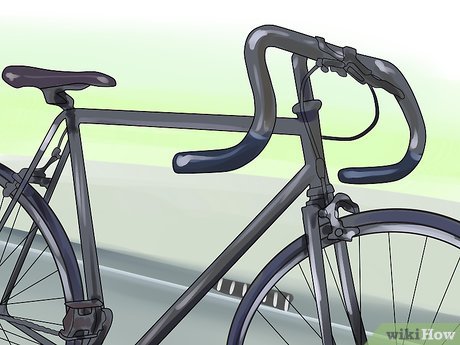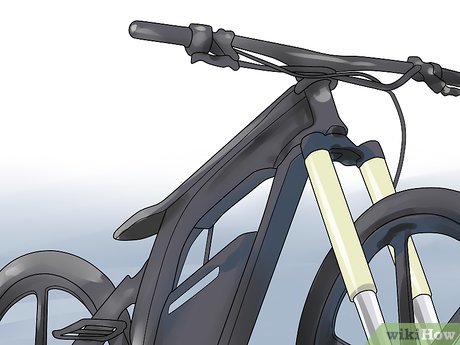How to Commute By Bicycle
Method 1 of 1:
Choosing a Commuter Bike
-
 Don't get sold on buying a mountain bike just because there are a lot of them. Bike shops are accustomed to stocking bikes for recreation, not for commuting, and the features on mountain bikes don't really benefit you as a commuter unless you're the aggressive type and need a more sturdy steed.
Don't get sold on buying a mountain bike just because there are a lot of them. Bike shops are accustomed to stocking bikes for recreation, not for commuting, and the features on mountain bikes don't really benefit you as a commuter unless you're the aggressive type and need a more sturdy steed.- Swap out the knobbies for durable slicks in this case but don't bother with full suspension. If most of your riding will presumably be done on pavement, you're better off with a hybrid, comfort, touring, road or singlespeed, designed for riding on pavement.
- You may also want to consider a recumbent bicycle. Ultimately, the most important factors when choosing a bike are comfort and efficiency.
-
 Hybrids and comfort bikes are the same thing, but have a wider version of the road bike wheel and tire (hybrid) or smooth version of the mountain bike-sized wheel and tire (comfort).
Hybrids and comfort bikes are the same thing, but have a wider version of the road bike wheel and tire (hybrid) or smooth version of the mountain bike-sized wheel and tire (comfort).- The hybrid is a bit more efficient where the comfort bike takes the bumps better; both feature a very comfy and upright pedaling position, good for taking the strain off your body.
- Touring bikes are beefier versions of road bikes but with more relaxed pedaling position, though usually not as relaxed as comfort/hybrid bikes.
-
 Converted road and track bikes are quite the rage in flatter areas, with a single gear to maintain and no shifting to learn. Track bikes have a fixed gear, so no rear brake is needed once you've gotten the hang of these stripped down speed machines.
Converted road and track bikes are quite the rage in flatter areas, with a single gear to maintain and no shifting to learn. Track bikes have a fixed gear, so no rear brake is needed once you've gotten the hang of these stripped down speed machines.- Watch out for your knees, though: a fixed gear means the pedals are directly linked to the rear wheel, eliminating the bike's ability to coast. Advanced fixer cyclists can ride a fixed gear bike in reverse by back-pedaling.
- A recumbent, whose lower center of gravity also takes getting used to, has a more powerful pedalling position, which is infinitely more comfortable. Faster recumbent bikes have pedals higher than or level with the seat. Lower pedals indicate a more comfort-oriented recumbent. Most recumbent bikes offer better aerodynamics than other bikes once you get up to speed, as well as a seat-back to add leverage against the pedals.
- The lower point of view makes you wish you could see through cars sometimes and must be recognized. Longer recumbent wheelbases are more stable, where shorter wheelbases are quicker and more maneuverable; test rides are generally offered at good recumbent shops, so take your time choosing and testing if you're looking to avoid the body pains of upright bikes.
-
 Carbon fiber bikes generally don't allow bolt-on accessories, such as panniers and kickstands. This means that if you buy a carbon-fiber bike you will most likely have to use a backpack, which can be hot on a summer day. Also, it may be more likely to fall over without a kickstand.
Carbon fiber bikes generally don't allow bolt-on accessories, such as panniers and kickstands. This means that if you buy a carbon-fiber bike you will most likely have to use a backpack, which can be hot on a summer day. Also, it may be more likely to fall over without a kickstand.
5 ★ | 2 Vote




 How to Start Biking
How to Start Biking How to Drift on a Bicycle
How to Drift on a Bicycle How to Store a Car for Winter
How to Store a Car for Winter How to Drive an ATV
How to Drive an ATV How to Raise Car Deficiency Counterclaims
How to Raise Car Deficiency Counterclaims How to Drive an Air Bag Equipped Car
How to Drive an Air Bag Equipped Car